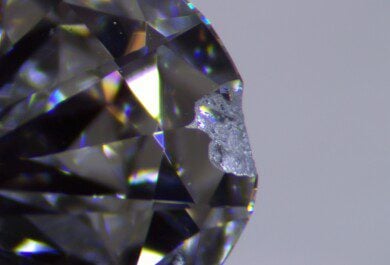Let’s start at the beginning. The Rappaport Diamond Report is a trade magazine for jewelers and others in the diamond business. It’s a pretty good magazine. It’s available by subscription only and interested subscribers can inquire at www.diamonds.net. One of the regular features is a diamond pricing grid that is used by many in the trade as a benchmark for pricing their goods. It’s updated weekly and distributed to subscribers by mail or fax. This grid is known as Rappaport, Rapaport, Rap or List and it’s quoted regularly as part of sales presentations.
Rap pricing is based on a four dimensional pricing structure that cross-references weight, clarity, color, and a few overall shapes into a single estimated price for each stone. This price is identified as a high New York wholesale asking price.
The primary problem lies in the fact that the four dimensions in their pricing structure is simply not enough for most consumer’s purpose, namely that of identifying if a stone that they are considering is a bargain. It skips over things like cut quality, grading lab, grading accuracy, location, optical performance, payment terms, provenance and similar variables that can all have a considerable affect on pricing. These ‘other’ variables can affect the price by as much as a factor of four or even more. It simply doesn’t serve as a stand-alone shopping tool and attempts to use it for this purpose can regularly lead to disaster.
What Rap does do is allow the dealers to keep the pricing of every stone current to the marketplace with a minimum of effort. When they originally buy a stone, they will examine that particular stone and set a price as a ratio of Rap based on these other characteristics. One stone in their inventory may be at Rap-40% while another superficially similar stone may be priced at Rap+10%, all because of these other properties. If they don’t think the details of the stone will support the price that they need to charge, they simply won’t buy that particular stone and the seller can either rethink their own pricing structure or simply find another client. Internal to the trade it all becomes very self-correcting. When Rap changes, a dealer can simultaneously adjust the price of their entire inventory to reflect the new market reality with a single click of a mouse because the discount ratio for each individual stone remains the same. For a dealer that has thousands of stones, this can be an enormously useful feature. It means that they don’t have to continuously reprice their inventory, risk selling a stone for less than they will need to replace it, or risk pricing themselves out of the market. Remember, diamond prices can, and sometimes do, change on a weekly basis. This is why almost every dealer uses Rap and why they are willing to pay the $180/year subscription fee. It’s also the reason that it’s not very useful for a consumer.
When a dealer tells a customer that a stone is Rap-20% (this is known as ’20 back’ in trade lingo), the customer has no way of knowing if similar stones should cost 40 back or 35 over. It’s like knowing the blue book value of a car without considering condition or even if it’s running! What the client wants to know is whether they are getting a bargain and the information simply isn’t there. The dealer has pointed to the Rap sheet as if it was the voice of the great and powerful Oz. Listen to the other voice that says, “Pay no attention to the man behind the curtain.”
by Neil Beaty
Professional Appraisals in Denver
http://www.americangemregistry.com/












